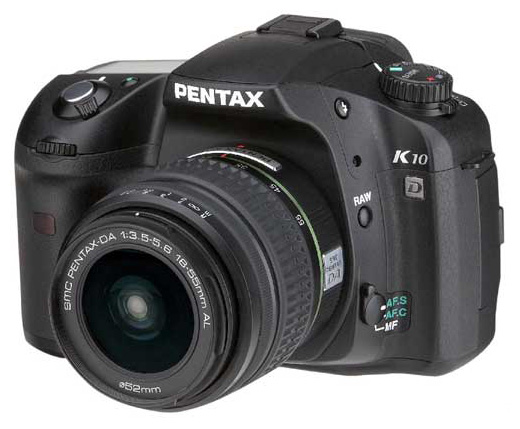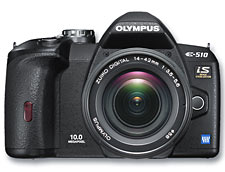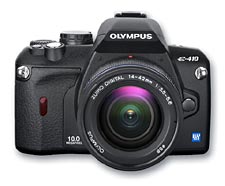Why the delay?
17th September 2011The time to renew my .Net magazine came around and I decided to go for the digital option this time. The main attraction is that new issues come along without their cluttering up my house afterwards. After all, I do get to wondering how much space would be taken up by photos and music if those respective fields hadn’t gone down the digital route. Some may decry the non-printing of photos that reside on hard disks or equivalent electronic storage media but they certainly take up less physical space like that. Of course, ensuring that they are backed up in case of a calamity then becomes an important concern.
As well as the cost of a weekly magazine that I didn’t read as much as I should, it was concerns about space that drove me to go the electronic route with New Scientist a few years back. They were early days for digital magazine publishing and felt like it too. Eventually, I weened myself from NS and the move to digital helped. Maybe trying to view magazine articles on a 17″ screen wasn’t as good an experience as seeing them on the 24″ one that I possess these days.
That bigger screen has come in very handy for Zinio‘s Adobe AIR application for viewing issues of .Net and any other magazine that I happen to get from them. There’s quite a selection on there and it’s not limited to periodicals from Future Media either. Other titles include The Economist, Amateur Photographer, Countryfile, What Car and the aforementioned New Scientist also. That’s just a sample of eclectic selection that is on offer.
For some reason, Future seem to wait a few days for the paper versions of their magazines to arrive in shops before the digital ones become available. To me, this seems odd given that you’d expect the magazines to exist on computer systems before they come off the presses. Not only that but subscribers to the print editions get them before they reach the shops at all anyway. This is the sort of behaviour that makes you wonder if someone somewhere is attempting to preserve print media.
In contrast, Scientific American get this right by making PDF’s of their magazines available earlier than print editions. Given that it takes time for an American magazine to reach the U.K. and Eire, this is a very good thing. There was a time when I was a subscriber to this magazine and I found it infuriating to see the latest issues on newsagent shelves and I still waiting for mine to arrive in the post. It was enough to make me vow not to become a subscriber to anything that left me in this situation every month.
Some won’t pass on any savings with their digital editions. Haymarket Publishing come to mind here for What Car but they aren’t alone. Cicerone, Cumbrian publishers of excellent guidebooks for those seeking to enjoy the outdoors, do exactly the same with their wares so you really want to save on space and gain extra convenience when going digital with either of these. In this respect, the publishers of Amateur Photographer have got it right with a great deal for a year’s digital subscription. New Scientist did the same in those early days when I dabbled in digital magazines.
Of course, there are some who dislike reading things on a screen and digital publishing will need to lure those too if it is to succeed. Nevertheless, we now have tablet computers and eBook readers such as Amazon’s Kindle are taking hold too. Reading things on these should feel more natural than on a vertical desktop monitor or even a laptop screen.
Nevertheless, there are some magazines that even I would like to enjoy in print as opposed to on a screen. These also are the ones that I like to retain for future consultation too. Examples include Outdoor Photography and TGO and it is the content that drives my thinking here. The photographic reproduction in the former probably is best reserved for print while the latter is more interesting. TGO does do its own digital edition but the recounting of enjoyment of the outdoors surpassed presentation until a few months ago. It is the quality of the writing that makes me want to have them on a shelf as opposed to being stored on a computer disk.
The above thought makes me wonder why I’d go for digital magazines in preference to their print counterparts. Thinking about it now, I am so sure that there is a clear cut answer. Saving money and not having clutter does a have a lot to to with it but there is a sense that keeping copies .Net is less essential to me though I do enjoy seeing what is happening in the world of web design and am open to any new ideas too. Maybe the digital magazine scene is still an experiment for me.
Amateur Photographer reviews…
19th July 2007Amateur Photographer seem to have had a run of reviews recently. First off were the Olympus E-410 and E-510 that they seemed to like. Then, they moved onto the Ricoh Caplio GX100 and they seemed to like that too, though they did say that quality wasn’t up to SLR standards. But then again, it is a compact and that might be expecting a bit too much. This week, Paint Shop Pro comes under the spotlight as does Epson’s V350 scanner. I have yet to read these but I have been engaging in a spot of equipment acquisition anyway. My CanoScan 5000F scanner has been usurped by Epson’s Perfection Photo 4490 and very happy I am with it too. The quality of the scans that I have been doing of prints has been good and the presence of an on/off switch is a creditable one. None of the other scanners that I have had possessed it and having to plug something in and out from the power socket is inconvenient to say the least. I have also gone and got myself a new DSLR. Seeing Pentax’s K10D going with a 18-55 mm lens for £499 at Jessop’s overrode my better reason and put paid to ideas of purchasing any other electronic goods for the rest of this year. It’s an award-winning gadget and Photography Monthly’s Will Cheung seemed to get on fine with it. Which Digital Camera said it was heavy but it has to stand up to use in the great outdoors. The sensor may be a 10 megapixel affair so this will be an upgrade to my Canon EOS 10D; that has a sensor in need of clean right now (I plan to get it done by the professionals) and every time that I want to use an image that it has made, Photoshop’s healing brush has to be pressed into service. Pentax does boast about all of the seals that it has added to the K10D, a good thing if they cut down on the dust entering the camera. And if dust does get in, the sensor cleaning feature will hopefully see it off from the photos. Image stabilisation, another value adding feature, is also there and may prove interesting. Strangely, there’s some motion picture capture as well and I hope that it doesn’t get the EU coming after me to collect retrospective camcorder duty. In any case, it’s not a feature that I really need and the Live View functions on the equivalent Olympus offerings fall into the same category anyway. It’ll be interesting to see how the K10D performs and it’s a change from the Canon/Nikon hegemony that seems to dominate digital photography these days.

Update: I have since perused the current issue of Amateur Photographer and seen that Paint Shop Pro suffered from performance issues on computers that worked fine with Photoshop. Otherwise, it compared well with Adobe’s offerings even if the interface wasn’t seen to be as slick. Epson’s V350 was well received though it was apparent that spending more got you a better scanner but that’s always the way with these things.
Ditching PC Plus?
28th June 2007When I start to lose interest in the features in a magazine that I regularly buy, then it’s a matter of time before I stop buying the magazine altogether. Such a predicament is facing PC Plus, a magazine that I been buying every month over the last ten years. The fate has already befallen titles like Web Designer, Amateur Photographer and Trail, all of which I now buy sporadically. Returning to PC Plus, I get the impression that it feels more of a lightweight these days. What Future Publishing has been doing over the last decade is add titles to its portfolio that take actually from its long established stalwart; Linux Format and .Net are two that come to mind and there are titles covering Windows Vista and computer music as well. Being a sucker for punishment, I did pick up this month’s PC Plus and the issue is as good an example of the malaise as any. Reviews, once a mainstay of the title, are now less prominent than they were. In place of comparison tests, we now find discussions of topics like hardware acceleration with some reviews mixed in. Topics such as robotics and artificial intelligence do rear their heads in feature articles and I cannot say that I have a great deal of time for such futurology. The tutorials section is still there but has been hived off into a separate mini-magazine and I am not so sure that it has escaped the lightweight revolution. All this is leading me to dump PC Plus in favour of PC Pro from Dennis Publishing. This feels reassuringly more heavyweight and, while the basic format has remained unchanged over the years, it still managed to remain fresh. Reviews, of both software and hardware, are very much in evidence and it manages to have those value-adding feature articles; this month, digital photography and rip-off Britain come under the spotlight. Add the Real Word Computing section and it all makes a good read in these times of behemoths like Microsoft, Apple and Adobe delivering new things on the technology front. I don’t know if I have changed but PC Pro does seem better than PC Plus these days.
Another Olympus E-system review
27th June 2007
I don’t buy Amateur Photographer much these days but sight of a review of Olympus’ E-410 and E-510 SLR’s got a copy into my possession. Amateur Photographer review features are usually comprehensive and this was no exception; there was none of the vitriol directed towards the Live View feature by Practical Photography, a defining feature of what i consider a lop-sided and none too useful review. The verdict was a positive one in the main with the E-510 getting the nod over the E-410 because it fared better on the usability side of things. Image quality, my major concern, was said to be impressive with only dynamic range counting against the results. The Live View feature didn’t attract the harsh commentary devoted to it by Practical Photography. Following this review, I have to say that the E-510 does tempt me with its combination of good image quality, dust removal and image stabilisation.
A tale of two reviews
21st June 2007
Recently, I encountered two very different reviews of the newly launched Olympus E-410 DSLR in Which Digital Camera? and Practical Photography, respectively. The review in the former was a positive affair, though it was a first look at the camera, but the impression formed by the latter reviewer was lukewarm in nature.
The camera features a live electronic viewer on its back, a carry over from digital compacts and a feature that I may never use. While that might be the unique selling point for the camera, good image quality and the fact that it possesses a cleaning mechanism for its sensor are of much more interest to me.
Ironically, the Practical Photography review spent most of its time talking about the very feature of the camera that interests me the least, with only a scant mention of quality; to be frank, I didn’t find it a very useful appraisal even if the electronic viewfinder may not be all that it’s cracked up to be and it’s picture quality and camera handling that ultimately matter to the photography enthusiast.
In contrast, Which Digital Camera? seemed to give a more rounded view and proved to be of more interest and I’d be interested to see what the likes of Photography Monthly and Amateur Photographer might have to say. Incidentally, I also shall be awaiting the Which Digital Camera? appraisal of Ricoh’s Caplio GX100 in their next issue.